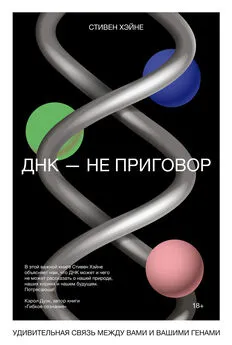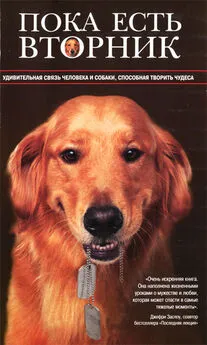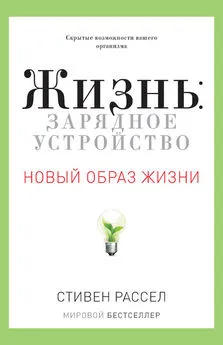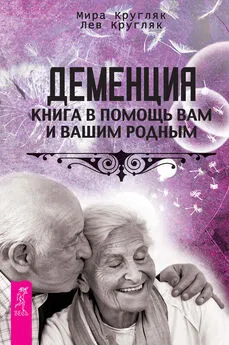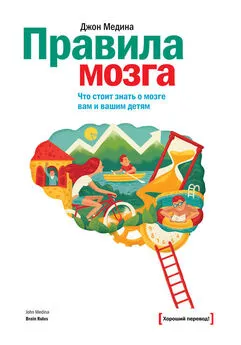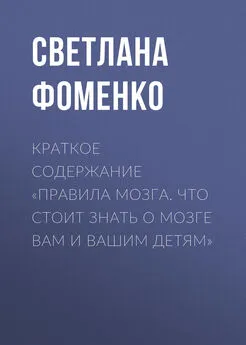Стивен Хэйне - ДНК – не приговор. Удивительная связь между вами и вашими генами
- Название:ДНК – не приговор. Удивительная связь между вами и вашими генами
- Автор:
- Жанр:
- Издательство:Литагент МИФ без БК
- Год:2019
- Город:Москва
- ISBN:978-5-00146-004-6
- Рейтинг:
- Избранное:Добавить в избранное
-
Отзывы:
-
Ваша оценка:
Стивен Хэйне - ДНК – не приговор. Удивительная связь между вами и вашими генами краткое содержание
ДНК – не приговор. Удивительная связь между вами и вашими генами - читать онлайн бесплатно ознакомительный отрывок
Интервал:
Закладка:
575
Более подробно см.: Murray, A. B., Carson, M. J., Morris, C. A., & Beckwith, J. (2010). Illusions of scientific legitimacy: misrepresented science in the direct-to-consumer genetic-testing marketplace. Trends in Genetics , 26 (11), 459–461.
576
Autism Developmental Disabilities Monitoring Network Surveillance Year 2010. Principle Investigators (2014). Prevalence of autism spectrum disorder among children aged 8 years. Morbidity and Mortality Weekly Report , 63 (SS02), 1–21.
577
Berg, J. M., & Geschwind, D. H. (2012). Autism genetics: Searching for specificity and convergence. Genome Biology , 13, 247–263.
578
Sanders, S. J., Ercan-Sencicek, A. G., Hus, V., Luo, R., Murtha, M. T., Moreno-De-Luca, D., et al. (2011). Multiple recurrent de novo CNVs, including duplications of the 7q11.23 Williams syndrome region, are strongly associated with autism. Neuron , 70, 863–885; Levy, D., Ronemus, M., Yamrom, B., Lee, Y. H., Leotta, A., Kendall, J., et al. (2011). Rare de novo and transmitted copy-number variation in autistic spectrum disorders. Neuron , 70, 886–897; Gilman, S. R., Iossifov, I., Levy, D., Ronemus, M., Wigler, M., & Vitkup, D. (2011). Rare de novo variants associated with autism implicate a large functional network of genes involved in formation and function of synapses. Neuron , 70, 898–907; Anney, R., Klei, L., Pinto, D., Almeida, J., Bacchelli, E., Baird, G., et al. (2012). Individual common variants exert weak effects on the risk for autism spectrum disorders. Human Molecular Genetics , 21, 4781–4792; Kong, A., Frigge, M. L., Masson, G., Besenbacher, S., Sulem, P., Magnusson, G., et al. (2012). Rate of de novo mutations and the importance of father’s age to disease risk. Nature , 488, 471–475; Chan, J. A. (2015). The emerging picture of autism spectrum disorder: Genetics and pathology. Annual Review of Pathology: Mechanisms of Disease , 10, 111–144.
579
Weintraub, K. (2011). Autism counts. Nature , 479, 22–24.
580
См. Gruber, J. (2013). The unfulfilled promise of genomics. In S. Krimsky & G. Gruber (Eds.) Genetic explanations (p. 270–282). Cambridge, MA: Harvard University Press.
581
Joseph, J., & Ratner, C. (2013). The fruitless search for genes in psychiatry and psychology. In S. Krimsky & G. Gruber (Eds.) Genetic explanations (p. 96–97). Cambridge, MA: Harvard University Press. См. также: Chaufan, C. (2007). How much can a large population study on genes, environments, and their interactions and common diseases contribute to the health of the American people? Social Science & Medicine , 65, 1730–1741.
582
Comfort, N. (29.01.2014). Genetic determinism: Why we never learn – and why it matters [Blog post] ( http://genotopia.scienceblog.com/387/genetic-determinism-why-we-never-learn-and-why-it-matters/).
583
Pearson, H. (2009). Human genetics: One gene, twenty years. Nature , 164–169, 460.
584
Amaral, M. D. (2015). Novel personalized therapies for cystic fibrosis: Treating the basic defect in all patients. Journal of Internal Medicine , 277, 155–166.
585
Цитата со с. 165 Pearson, H. (2009). Human genetics: One gene, twenty years. Nature , 460, 164–169.
586
О причинах медленных темпов развития методов лечения на основе генома см.: Palmer, B. (30.09.2013). Where are all the miracle drugs? Slate Magazine ( http://www.slate.com/articles/health_and_science/human_genome/2013/09/human_genome_drugs_where_are_the_miracle_cures_from_genomics_did_the_genome.1.html); Wade, N. (12.06.2010). A decade later, genetic map yields few new cures. New York Times ( http://www.nytimes.com/2010/06/13/health/research/13genome.html?_r=0).
587
Chapman, P. B., Hauschild, A., Robert, C., Haanen, J. B., Ascierto, P., Larkin, J., et al. (2011). Improved survival with vemurafenib in melanoma with BRAF V600E mutation. New England Journal of Medicine , 364, 2507–2516.
588
O’Brien, S. G. (2003). Imatinib compared with interferon and low-dose cytarabine for newly diagnosed chronic-phase chronic myeloid leukemia. New England Journal of Medicine , 348, 994–1004.
589
Rodin, J., & Langer, E. J. (1977). Long-term effects of a control-relevant intervention with the institutionalized aged. Journal of Personality and Social Psychology , 35, 897–902.
590
Ornish, D., Brown, S. E., Scherwitz, L. W., Billings, J. H., Armstrong, W. T., Ports, T. A., et al. (1990). Can lifestyle changes reverse coronary heart disease? The Lifestyle Heart Trial. The Lancet , 129–133, 336.
591
Diabetes Prevention Program Research Group (2002). Reduction in the incidence of Type 2 diabetes with lifestyle intervention or metformin. New England Journal of Medicine , 346, 393–403.
592
Smyth, J. M., Stone, A. A., Hurewitz, A., & Kaell, A. (1999). Effects of writing about stressful experiences on symptom reduction in patients with asthma or rheumatoid arthritis. Journal of the American Medical Association , 281, 1304–1309.
593
Creswell, J. D., Myers, H. F., Cole, S. W., & Irwin, M. R. (2009). Mindfulness meditation training effects on CD4+ T lymphocytes in HIV-1 infected adults: A small randomized controlled trial. Brain, Behavior, and Immunity , 23, 184–188.
594
Spiegel, D., Bloom, J. R., Kraemer, H. C., & Gottheil, E. (1989). Effect of psychosocial treatment on survival of patients with metastatic breast cancer. The Lancet , 334, 888–891; Goodwin, P. J., Leszcz, M., Ennis, M., Koopmans, J., Vincent, L., Guther, H., et al. (2001). The effect of group psychosocial support on survival in metastatic breast cancer. The New England Journal of Medicine , 345, 1719–1726.
595
Kluger, J. (02.12.2010). Too many one-night stands? Blame your genes. Time ( http://healthland.time.com/2010/12/02/too-many-one-night-stands-blame-your-genes/); Firth, N., & Macrae, F. (03.12.2010). The Love-Cheat Gene: One in four born to be unfaithful, claim scientists. Daily Mail ( http://www.dailymail.co.uk/sciencetech/article-1334932/The-love-cheat-gene-One-born-unfaithful-claim-scientists.html).
596
Прекрасное обсуждение темы «ученых, которые обнаружили ген, отвечающий за…» приведено в лекции доктора Стива Джонса Nature or Nurture ( https://www.youtube.com/watch?v=1ksP34GYwbY).
597
Conrad, P. (2002). Genetics and behavior in the news: Dilemmas of a rising paradigm. In J. S. Alper, C. Ard, A. Asch, J. Beckwith, P. Conrad, & L. N. Geller (Eds.) The double-edged helix: Social implications of genetics in a diverse society . Baltimore, MD: Johns Hopkins University Press.
598
Lakoff, G., & Johnson, M. (1980). Metaphors we live by. Chicago, IL: University of Chicago Press; Landau, M. J., Meier, B. P., & Keefer, L. A. (2010). A metaphor-enriched social cognition . Psychological Bulletin , 136, 1045–1067.
599
О метафорах, применяемых для описания генов, см.: Condit, C. M. (1999). The meanings of the gene . Madison, WI: University of Wisconsin Press; Francis, R. C. (2011). Epigenetics. New York, NY: W. W. Norton; Sapolsky, R. (1997, Oct.). A gene for nothing. § 6. Discover ( http://discovermagazine.com/1997/oct/agenefornothing1242); Hubbard, R., & Wald, E. (1997). Exploding the gene myth: How genetic information is produced and manipulated by scientists, physicians, employers, insurance companies, educators and law enforcers . Boston, MA: Beacon Press; Keller, E. F. (2000). The century of the gene . Cambridge, MA: Harvard University Press.
600
Изучение менделевской теории с большей вероятностью приводит к большему генетическому детерминизму, чем знакомство с концепциями о взаимодействии генов с окружающей средой (Radick, G. (2016). Teach students the biology of their time. Nature , 293, 533).
601
См.: Walker, I., & Read, J. (2002). The differential effectiveness of psychosocial and biogenetic causal explanations in reducing negative attitudes toward «mental illness». Psychiatry: Interpersonal and Biological Processes , 65, 313–325; Boysen, G. A., & Gabreski, J. D. (2012). The effect of combined etiological information on attitudes about mental disorders associated with violent and nonviolent behaviors. Journal of Social and Clinical Psychology , 31, 852–877; Cheung, B. Y., & Heine, S. J. (2016). Efforts to reduce essentialist responses to genetic accounts . Unpublished data. The University of British Columbia.
602
Ream, C., Cheung, B. Y., & Heine, S. J. (2016). The role of genetics education on genetic essentialism . Unpublished data. The University of British Columbia; Castéra, J., & Clément, P. (2014). Teachers’ conceptions about the genetic determinism of human behaviour: A survey in 23 countries. Science & Education , 23, 417–443.
603
Обзор литературы по теме см.: Nisbett, R. E. (2015). Mindware: Tools for smart thinking . New York, NY: Farrar, Straus, and Giroux.
604
Примеры см.: Devine, P. G., Forscher, P. S., Austin, A. J., & Cox, W. T. L. (2012). Long-term reduction in implicit race bias: A prejudice habit-breaking intervention. Journal of Experimental Social Psychology , 48, 1267–1278.
605
Несколько примеров приведены в изданиях: Beaman, A. L., Barnes, P. J., Klentz, B., & McQuirk, B. (1978). Increasing helping rates through informational dissemination: Teaching pays. Personality and Social Psychology Bulletin , 4, 406–411; Johns, M., Schmader, T., & Martens, A. (2005). Knowing is half the battle: Teaching stereotype threat as a means of improving women’s math performance. Psychological Science , 16, 175–179.
Интервал:
Закладка:
